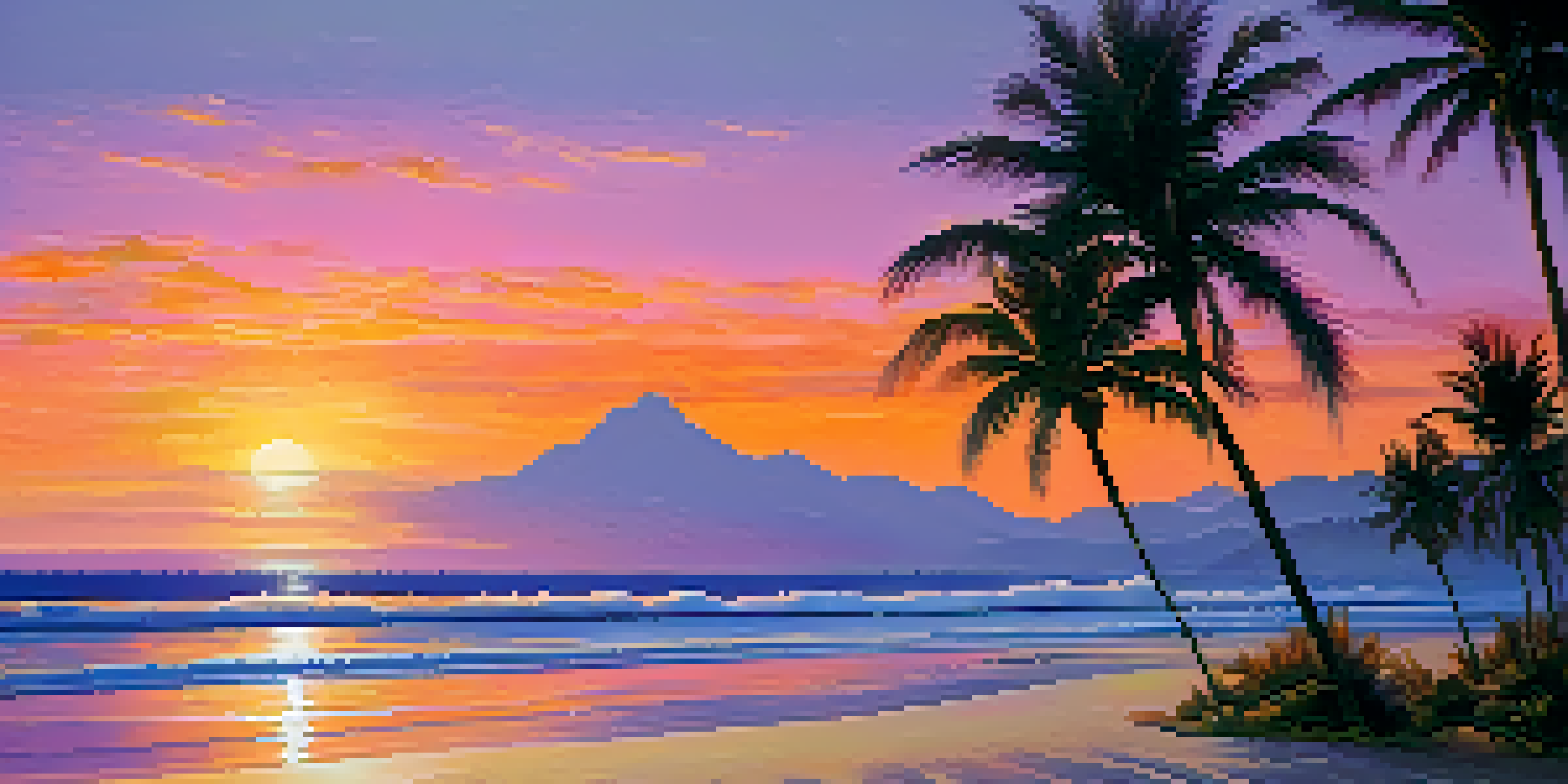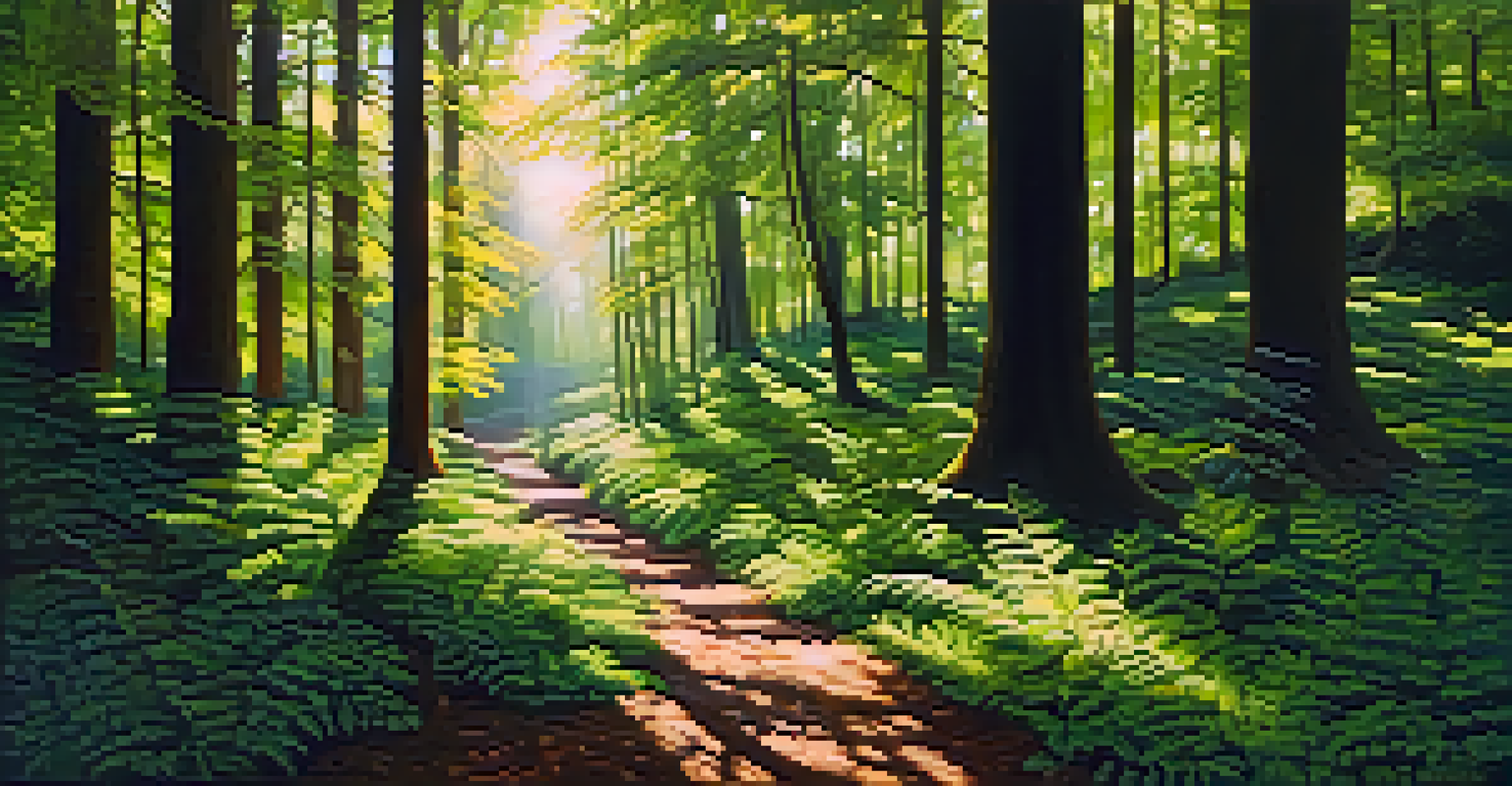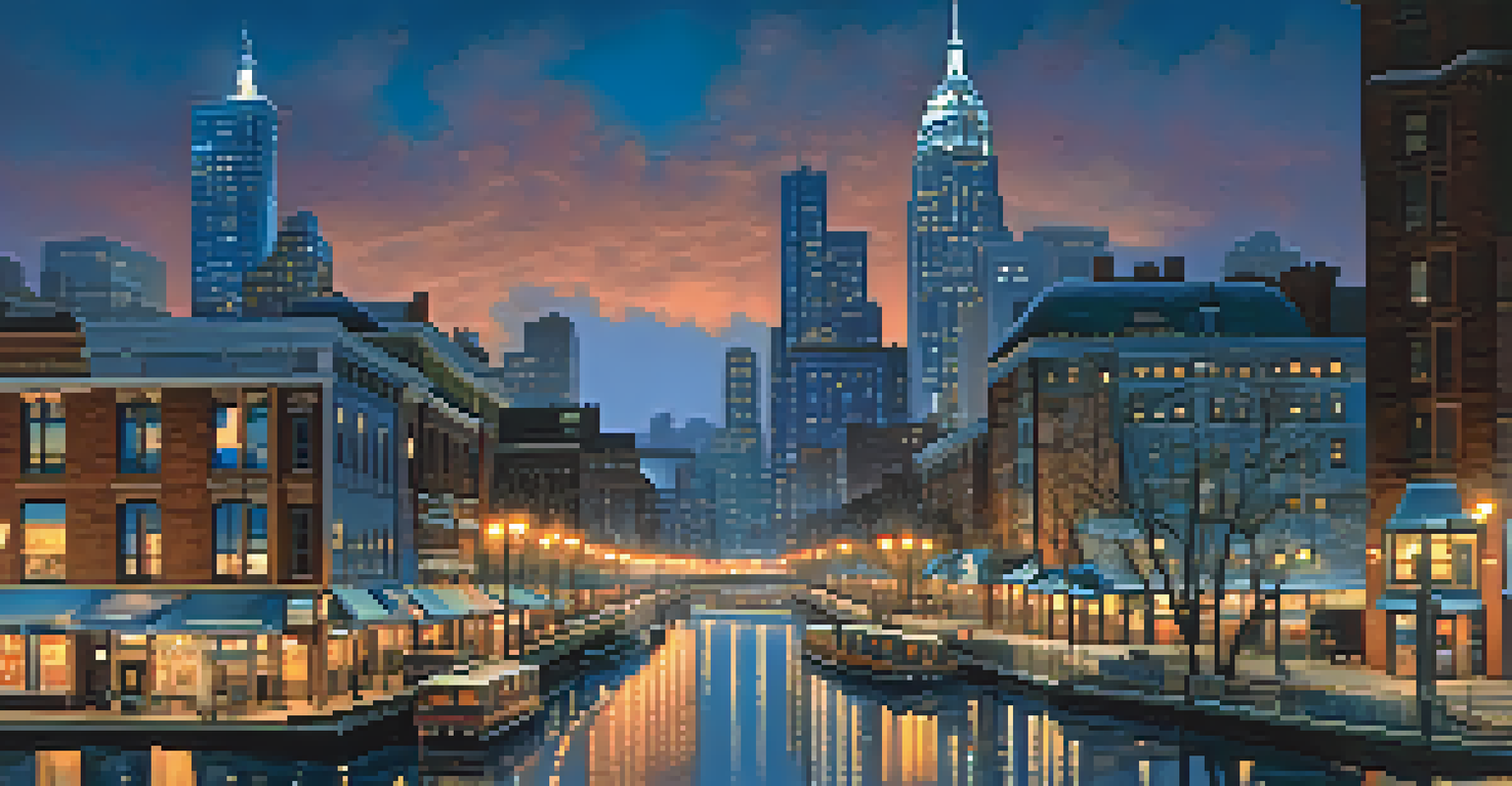How to Make the Most of Natural Light in Travel Photos

Understanding the Different Types of Natural Light
Natural light can be categorized into several types, each with its unique characteristics. There’s soft light, which occurs on overcast days, and harsh light, which is often seen during midday. Knowing how these different types of light affect your photos can help you choose the best times to shoot.
Light is the magician that transforms the ordinary into the extraordinary.
For instance, soft light is perfect for capturing details and colors without harsh shadows, making it ideal for portraits and landscapes. In contrast, harsh midday sun can create strong contrasts and dramatic effects, which can be great for certain styles of photography. Understanding these nuances allows you to adapt your shooting technique accordingly.
Ultimately, recognizing the type of natural light you’re working with is the first step towards creating stunning travel photos. By observing how light interacts with your surroundings, you can make more informed decisions about composition and timing.
The Magic Hour: Golden and Blue Hour Explained
The golden hour, which occurs shortly after sunrise and before sunset, is often hailed as the best time for photography. During this time, the light is warm and diffused, casting a lovely glow on your subjects. This magical hour can turn even ordinary scenes into enchanting images.

Conversely, the blue hour, which happens just before sunrise and after sunset, offers a different charm. The light is cooler, creating a serene atmosphere that can add mood to your photos. This period is ideal for capturing cityscapes and landscapes bathed in twilight.
Types of Natural Light Matter
Understanding the characteristics of soft and harsh natural light can significantly improve your photography.
By planning your shoots around these two hours, you can significantly enhance the quality of your travel photos. Take some time to scout locations and be ready to shoot as the light changes, ensuring you don’t miss these fleeting moments.
Finding the Best Locations to Capture Natural Light
Location plays a crucial role in how natural light affects your photos. Consider places with varied textures, colors, and reflections, such as beaches, forests, or urban settings. Each environment interacts differently with light, offering unique opportunities for stunning shots.
Photography is the story I fail to put into words.
For example, shooting near water can create beautiful reflections during golden hour, while shooting in a forest might provide dappled light that adds interest to your images. Look for elements in your surroundings that can enhance the natural light, like interesting shadows or light filtering through leaves.
Don’t hesitate to explore off-the-beaten-path locations, as they often provide less crowded and more picturesque settings. By being intentional about where you shoot, you can take full advantage of the natural light available.
Utilizing Shadows to Enhance Your Photos
Shadows are a photographer's secret weapon when it comes to adding depth and dimension to images. Instead of avoiding them, learn to incorporate shadows creatively into your compositions. They can create contrast, highlight textures, and even tell a story.
For instance, capturing a silhouette against a vibrant sunset can produce a striking image that emphasizes the subject’s shape. Additionally, shadows can guide the viewer’s eye through the photograph, leading them to the focal point you want to showcase.
Golden and Blue Hour Benefits
Shooting during the golden and blue hours enhances the quality of photos by providing warm and cool lighting effects.
Experimenting with shadows allows you to add a unique flair to your travel photography. By being aware of how light and shadow interact, you can create more visually interesting and dynamic compositions.
Using Reflectors to Control Natural Light
Reflectors can help you manipulate natural light to achieve your desired look. These handy tools bounce light onto your subject, reducing harsh shadows and adding a soft glow. They can be particularly useful during midday shoots when the sun is at its brightest.
You don’t need expensive gear; a simple piece of white cardboard or a silver foil can work wonders. Position the reflector to direct light onto your subject’s face, creating a more flattering and even illumination. This technique is especially useful in portrait photography.
Using reflectors can help you maintain control over the natural light in your shots. By experimenting with different angles and surfaces, you can enhance your travel photos and bring out the best features of your subjects.
Adjusting Your Camera Settings for Natural Light
Understanding your camera settings is essential for making the most of natural light. Adjusting your aperture, shutter speed, and ISO can help you capture the best possible images in varying light conditions. A wider aperture allows more light in, which is great for low-light scenarios.
For example, if you’re shooting during the golden hour, you may want to use a larger aperture to create that dreamy, blurred background effect. Conversely, during bright conditions, you might need to decrease the aperture to avoid overexposure.
Control Light with Reflectors
Using reflectors allows you to manipulate natural light, reducing harsh shadows and creating a flattering glow in your images.
Getting comfortable with these settings can feel overwhelming at first, but practice makes perfect. Spend some time experimenting in different lighting conditions to see how each setting impacts your photos, and soon, you’ll feel more confident and creative behind the lens.
Post-Processing: Enhancing Natural Light in Editing
Post-processing is a powerful tool for enhancing the natural light in your photos. Using editing software like Lightroom or Photoshop, you can adjust exposure, contrast, and color balance to make your images pop. This step can be crucial for bringing out the best in your travel shots.
For instance, you can increase the warmth of a photo taken during the golden hour to emphasize the golden hues. Alternatively, enhancing shadows and highlights can add depth and make your images more dynamic.

While it’s important to capture great images in-camera, post-processing allows you to refine and elevate your work. Remember, the goal is to enhance the natural beauty of your subjects, not to completely alter them.